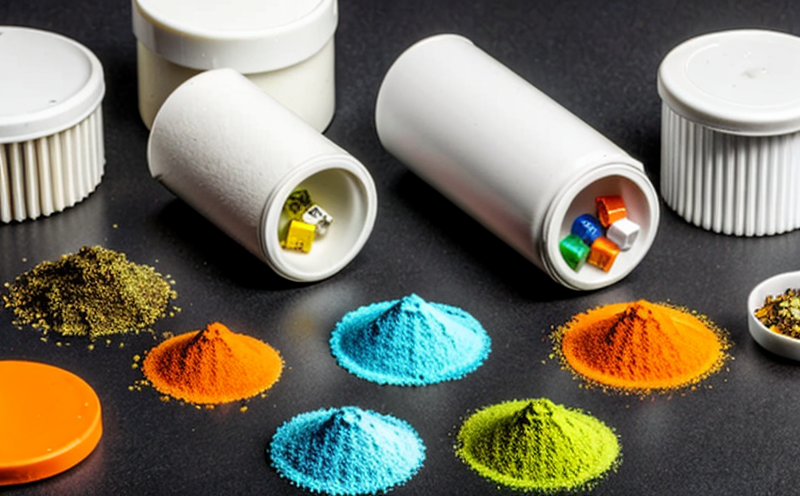Assessing the migration of substances from packaging components into both active and inactive ingredients
The Crucial Role of Assessing Migration in Packaging Ensuring Consumer Safety and Product Integrity
As the global packaging industry continues to evolve, manufacturers are facing increasing pressure to ensure the safety and quality of their products. One critical aspect of this process is assessing the migration of substances from packaging components into both active and inactive ingredients. This laboratory service, offered by Eurolab, plays a vital role in preventing the contamination of products and protecting consumers.
What is Assessing Migration?
Assessing migration refers to the process of evaluating the transfer of chemicals or substances from packaging materials into food, pharmaceuticals, or other consumer goods. This can include additives, contaminants, or residual solvents that may be present in the packaging components. When these substances migrate into the product, they can compromise its quality, efficacy, and safety for consumption.
Why is Assessing Migration Essential?
The migration of substances from packaging materials poses a significant risk to consumer health and product integrity. Some of the reasons why assessing migration is crucial include
Ensuring Consumer Safety The European Unions (EU) Food Contact Materials Regulation emphasizes the need for strict controls on the use of food contact materials, including packaging components. Assessing migration helps manufacturers prevent the transfer of harmful substances into their products.
Preventing Contamination Migration can lead to contamination of products, which can result in product recalls, brand damage, and financial losses. By detecting potential issues early, companies can take corrective action before its too late.
Compliance with Regulations Manufacturers must adhere to various regulations, such as the EUs Cosmetics Regulation (EC) No 1223/2009 and the US FDAs Food and Drug Administration (FDA) regulations. Assessing migration ensures compliance with these standards.
Preserving Product Quality The migration of substances can affect product quality, stability, and shelf life. By monitoring packaging materials, companies can prevent degradation and ensure their products meet desired specifications.
Advantages of Using Eurolabs Assessing Migration Service
Eurolabs assessing migration service offers numerous benefits to manufacturers
Risk Assessment Our experts provide a comprehensive risk assessment to identify potential issues with packaging materials.
Compliance Support We help companies comply with relevant regulations and standards, ensuring their products meet regulatory requirements.
Quality Control Our service ensures that products are free from contaminants and substances that can compromise quality or safety.
Cost Savings By detecting potential issues early, manufacturers can avoid costly product recalls, rework, and waste.
Key Benefits of Eurolabs Assessing Migration Service
Here are some key benefits of our assessing migration service
Thorough Testing Our team conducts thorough testing to detect the presence of substances in packaging materials.
Accurate Results We provide accurate and reliable results, allowing manufacturers to make informed decisions about their products.
Expert Analysis Our experts analyze data and provide recommendations for improving product quality and safety.
Timely Reporting We deliver timely reports, enabling companies to take corrective action quickly.
QA Frequently Asked Questions
Here are some frequently asked questions about Eurolabs assessing migration service
Q What types of packaging materials can be tested?
A Our experts test various packaging materials, including plastics, metals, glass, and paper-based products.
Q How do you detect potential issues with packaging materials?
A We use advanced testing methods, such as GC-MS, HPLC, and ICP-MS, to detect substances that may be present in the packaging components.
Q What types of products can benefit from assessing migration?
A Any product that comes into contact with packaging materials can benefit from our service, including food, pharmaceuticals, cosmetics, and personal care products.
Q Can you provide recommendations for improving product quality and safety?
A Yes, our experts provide recommendations based on test results to help manufacturers improve their products quality and safety.
Conclusion
Assessing the migration of substances from packaging components into both active and inactive ingredients is a critical aspect of ensuring consumer safety and product integrity. Eurolabs laboratory service provides a comprehensive solution for manufacturers, helping them prevent contamination, ensure compliance with regulations, and preserve product quality. By partnering with Eurolab, companies can mitigate risks, avoid costly recalls, and maintain their brand reputation.
-
Testing the migration of substances from packaging materials into pharmaceutical products
-
Assessing the risk of chemical migration from packaging components into drug formulations
-
Simulating the migration of plasticizers, monomers, or other residual substances into the product
-
Testing the migration of inks, adhesives, and other non-packaging components into pharmaceutical products
-
Evaluating the effect of time, temperature, and humidity on migration levels in packaging materials
-
Testing for the migration of moisture or gases from packaging materials into sensitive drug products
-
Simulating the effect of migration on the stability and safety of pharmaceutical products
-
Assessing migration rates of harmful substances from packaging over long-term storage periods
-
Testing the potential for migration of chemicals from packaging materials during transportation
-
Evaluating the safety of packaging materials based on migration study results and regulatory standards
-
Testing for migration from specific packaging materials like plastics, glass, or aluminum
-
Simulating migration scenarios under different environmental conditions (e.g., heat, light, moisture) to assess packaging performance
-
Testing for migration levels in packaging materials used for both solid and liquid pharmaceutical products
-
Assessing migration potential through accelerated testing techniques and long-term storage simulations
-
Testing migration in different pharmaceutical packaging systems, such as blister packs or bottles
-
Evaluating the effectiveness of barrier materials in preventing the migration of substances from packaging
-
Simulating the effect of migration on the shelf life and quality of pharmaceutical products
-
Testing migration using specific regulatory methods to ensure compliance with pharmaceutical packaging standards
-
Evaluating migration under stress testing conditions like vibration, pressure, and impact during transport
-
Testing for the migration of volatile substances, including solvents and plasticizers, from packaging materials
-
Testing the migration of packaging materials in direct contact with sensitive pharmaceutical ingredients
-
Verifying packaging safety through comprehensive migration studies to meet industry regulations




